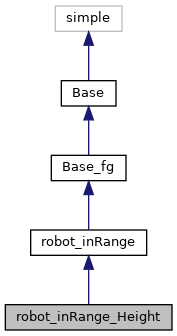|
| def | __init__ (self, low_th, high_th, HeightEstimator theHeightEstimator=None, tracker=None, trackFilter=None, Params params=Params()) |
| |
| def | post_process (self, det_mask) |
| |
| def | process_depth (self, depth) |
| |
| def | update_height_map (self, height_map) |
| |
| def | __init__ (self, low_th, high_th, tracker=None, trackFilter=None, Params params=Params()) |
| |
| def | det_mask (self) |
| |
| def | __init__ (self, theDetector, theTracker, trackFilter, Params params) |
| |
| def | __init__ (self, theDetector, theTracker, trackFilter, Params params) |
| |
| def | draw_layer (self, img=None, raw_detect=False, ax=None) |
| |
| def | get_mask (self) |
| |
| def | get_state (self) |
| |
| def | measure (self, I) |
| |
| def | update_params (self, name, val) |
| |
The robot segmenter that uses the inRange segmentation on the height map
The height based segmentation is treated as a routine post-process step.
The customized postprocess passed through the params will be applied
after the routine post-process
The height map can be obtained in two ways:
1. Pass a heightEstimator to the constructor, and call process_depth function
to obtrain the height
2. Use the setHeight function to set the heigth directly
NOTE: Now for sanity only allows one of the ways to be activated.
(i.e.) If the heightEstimator is stored, then setHeight will be disabled
If the heightEstimator is None, then process_depth will be disabled
@param[in] low_th float.The lower threshold for the inRange method
@param[in] high_th float.The higher threshold for teh inRange method
@param[in] theHeightEstimator HeightEstimator. Default is None. Used to estimate
height from the depth. If None, then requires set the
depth before processing each frame.


 Public Member Functions inherited from robot_inRange
Public Member Functions inherited from robot_inRange Public Member Functions inherited from Base_fg
Public Member Functions inherited from Base_fg Public Member Functions inherited from Base
Public Member Functions inherited from Base Public Attributes inherited from Base
Public Attributes inherited from Base